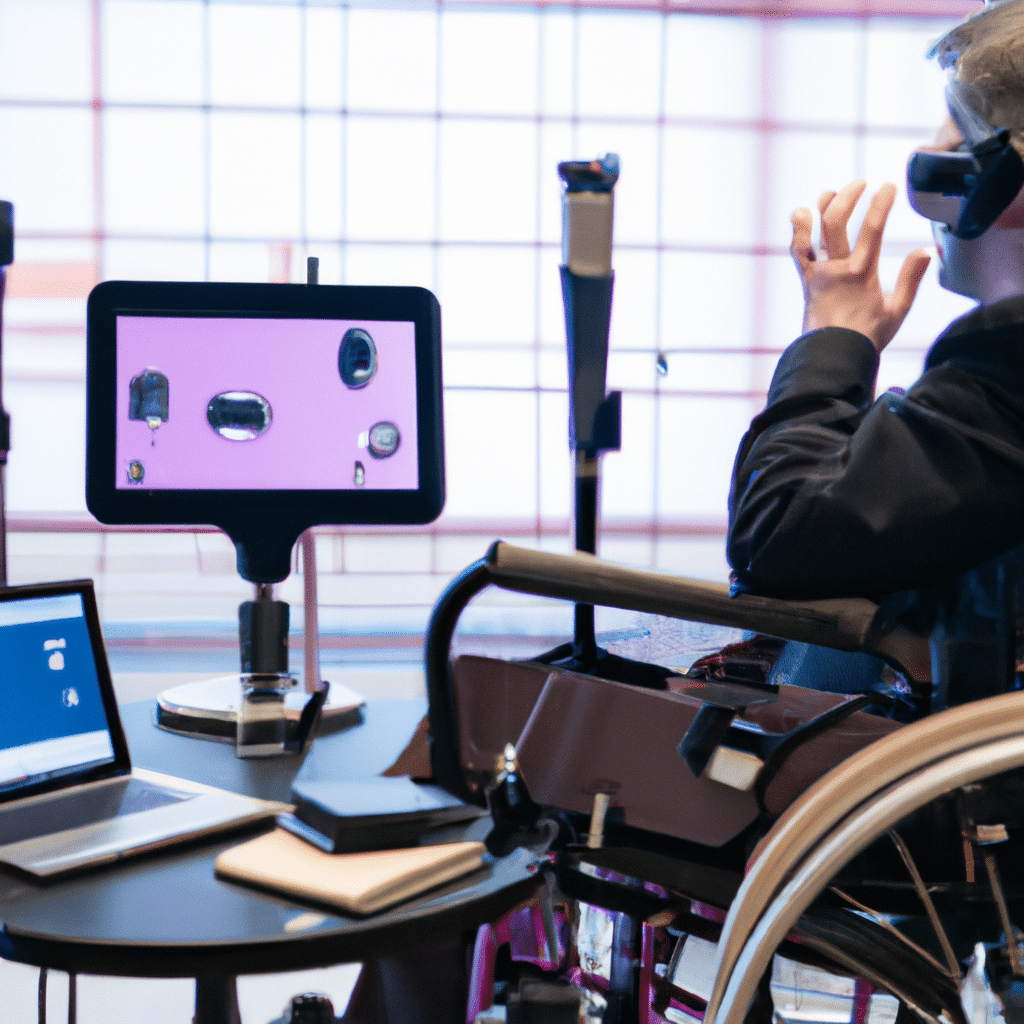The Use of AI in Improving Accessibility for People with Disabilities
In recent years, there has been a significant increase in the use of Artificial Intelligence (AI) technology to improve accessibility for people with disabilities. AI is a branch of computer science that uses algorithms to simulate intelligent behavior and enable machines to learn from data. The use of AI in improving accessibility has brought about significant improvements in the lives of people with disabilities, enabling them to lead more fulfilling and independent lives. In this article, we will explore the various ways in which AI is being used to improve accessibility for people with disabilities.

AI-Powered Assistive Technologies
AI-powered assistive technologies are devices that use AI algorithms to assist people with disabilities in performing daily tasks. These devices are designed to be more intuitive and personalized in their interactions with users. Examples of AI-powered assistive technologies include smart home devices, voice recognition software, and wearable technology.
Smart home devices such as Amazon’s Alexa and Google Home have been designed to assist people with disabilities in controlling their homes. These devices can be programmed to perform a variety of tasks, including turning off lights, adjusting the temperature, and opening doors. Voice recognition software such as Dragon Naturally Speaking has also been designed to assist people with disabilities in performing tasks such as typing and navigating the internet. Wearable technology such as smartwatches and fitness trackers have also been designed to assist people with disabilities in monitoring their health.
AI-Powered Mobility Devices
AI-powered mobility devices are devices that use AI algorithms to assist people with disabilities in moving around. These devices include powered wheelchairs, mobility scooters, and exoskeletons. AI-powered mobility devices are designed to be more intuitive and personalized in their interactions with users. They can also be programmed to learn from the user’s movements and adjust accordingly.
Powered wheelchairs and mobility scooters are designed to assist people with disabilities in moving around. These devices use AI algorithms to adjust to the user’s movements and provide a more comfortable and efficient experience. Exoskeletons are wearable devices that assist people with disabilities in standing and walking. These devices use AI algorithms to adjust to the user’s movements and provide a more natural walking experience.
AI-Powered Communication Devices
AI-powered communication devices are devices that use AI algorithms to assist people with disabilities in communicating. These devices include speech-generating devices, eye-tracking devices, and brain-computer interfaces. AI-powered communication devices are designed to be more intuitive and personalized in their interactions with users. They can also be programmed to learn from the user’s communication patterns and adjust accordingly.
Speech-generating devices are designed to assist people with disabilities in communicating through speech. These devices use AI algorithms to generate speech based on the user’s input. Eye-tracking devices are designed to assist people with disabilities in communicating through eye movements. These devices use AI algorithms to track the user’s eye movements and generate speech based on their input. Brain-computer interfaces are designed to assist people with disabilities in communicating through their thoughts. These devices use AI algorithms to interpret the user’s brain signals and generate speech based on their input.
AI-Powered Accessibility Tools
AI-powered accessibility tools are tools that use AI algorithms to make websites and applications more accessible to people with disabilities. These tools include screen readers, captioning tools, and accessible design tools. AI-powered accessibility tools are designed to be more intuitive and personalized in their interactions with users. They can also be programmed to learn from the user’s accessibility needs and adjust accordingly.
Screen readers are designed to assist people with disabilities in accessing text-based information on websites and applications. These tools use AI algorithms to convert text into speech or braille. Captioning tools are designed to assist people with disabilities in accessing audio and video-based information on websites and applications. These tools use AI algorithms to generate captions based on the audio or video content. Accessible design tools are designed to assist website and application designers in creating accessible content. These tools use AI algorithms to provide suggestions for improving accessibility based on user input.
Conclusion
AI technology has revolutionized the world of accessibility for people with disabilities. AI-powered assistive technologies, mobility devices, communication devices, and accessibility tools have brought about significant improvements in the lives of people with disabilities, enabling them to lead more fulfilling and independent lives. As AI technology continues to evolve, we can expect to see even more innovative solutions for improving accessibility for people with disabilities.












